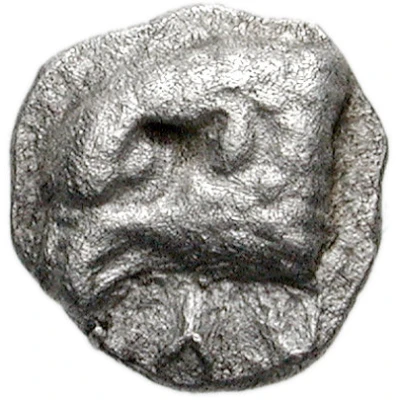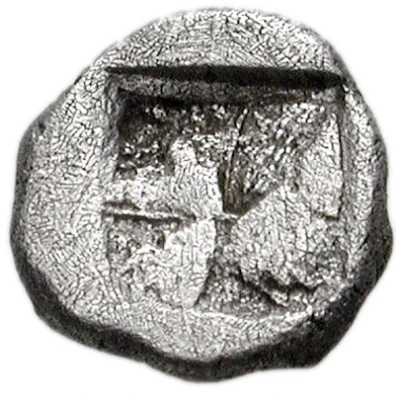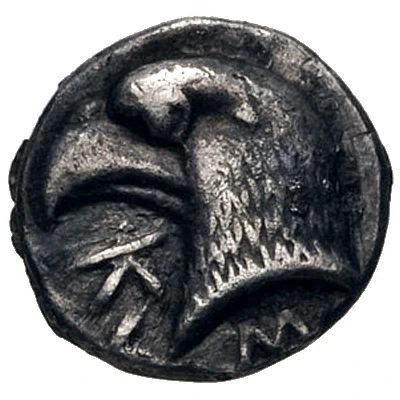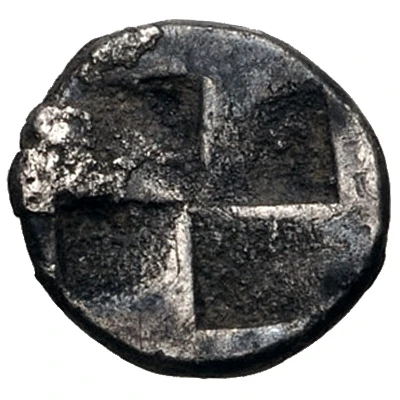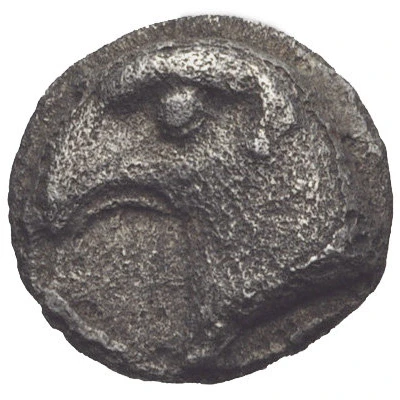
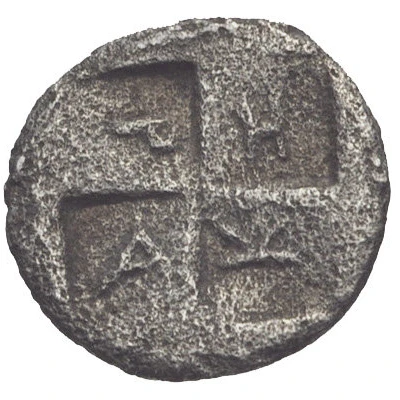

© Classical Numismatic Group, Inc.
Hemiobol 480 BC - 450 BC
| Silver | 0.38 g | 8.0 mm |
| Issuer | Kyme (Aeolis) |
|---|---|
| Type | Standard circulation coin |
| Years | 480 BC - 450 BC |
| Value | Hemiobol (1⁄12) |
| Currency | Drachm |
| Composition | Silver |
| Weight | 0.38 g |
| Diameter | 8.0 mm |
| Shape | Round (irregular) |
| Technique | Hammered, Incuse |
| Demonetized | Yes |
| Updated | 2024-10-09 |
| Numista | N#143688 |
|---|---|
| Rarity index | 97% |
Reverse
Quadripartite incuse square of mill-sail pattern with one letter in each compartment
Script: Greek
Lettering: Κ-Α-Ρ-Η
Interesting fact
The Hemiobol coin was used as a form of currency in ancient Greece, specifically in the city of Kyme, which was located in the region of Aeolis. The coin was made of silver and weighed approximately 0.38 grams. Despite its small size, the Hemiobol was an important coin in ancient Greece, as it was used to purchase everyday items such as food, clothing, and other household goods.
